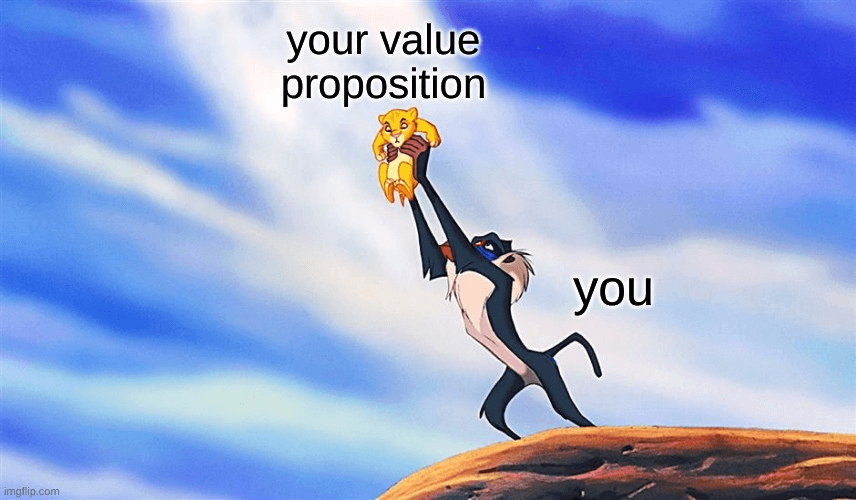We recently hosted Jim Kalbach on the Unlocking Growth Podcast speaking about his book “The Jobs To Be Done Playbook”.
We wanted to know the essentials on HOW TO align markets to customers needs but first, what on earth does “Jobs to be done” mean?
And what are the 5 essentials in aligning your markets and organization around customer needs?
What exactly does Jobs to be done mean?
“When we buy a product, we essentially “hire” it to help us do a job. If it does the job well, the next time we’re confronted with the same job, we tend to hire that product again. And if it does a crummy job, we “fire” it and look for an alternative.” ~Harvard Business Review
Entrepreneurs the world over spend countless hours tossing and turning with excitement and anticipation of launching their product.
Build it and they will come, is often used to justify an idea or go to marketing strategy.

“Understanding the “job” for which customers hire a product or service helps innovators more accurately develop products that align with what customers are already trying to accomplish.” ~ The Clayton Christensen Institute
Famous milkshakes and Jobs to be done

The famous milkshake example from MacDonald’s of the Jobs to be Done framework refers to a case study used to illustrate how companies can better understand their customers’ needs and design products that meet those needs.
MacDonalds wanted to sell more milkshakes so first they thought to focus on the product but after conducting in-depth interviews, the team discovered that customers were buying milkshakes for breakfast.
But why?
The researchers saw that it was mainly people on the road that came in during the morning around 8h30am to buy milkshakes. Was it for energy? Was it for nutrition?
As it turned out, people got bored in the car on their morning commute, and it gave them something to do.
So the pain that needed to be met, of the job to be done, was let’s give people something in their hands that can occupy them while on, on the road.
💡 HOT TIP
Really digging deep into the underlying reasons customers do something, can be very powerful. It’s all about understanding customer motivation.
What is the benefit of implementing a jobs-to-be-done framework?
Implementing a Jobs-to-be-Done (JTBD) framework can bring several benefits, including






Define and capture customer needs in a new way, bringing predictability to the innovation process


Why write a book about jobs to be done?
The field of jobs to be done has been around for decades, popularized by, Clayton Christensen, who was really thinking about how do you look at the market and market needs without seeing the people that you serve through the lens of your own brand or your solution.

So how to think about human needs?
What Jim had noticed, being a practitioner in the field is that there were lots of different perspectives and methods. His mission was to simplify the concept of jobs to be done and make in tangible for companies to implement.
The book is written for entrepreneurs and startups but product managers and marketing teams will benefit from reading the book and implementing the plays.
Generally, it’s people who are building something, and the way that I like to frame it is change makers.
If you are in a business and you need to innovate or you need to improve what you’re doing, or you need to make a change in the world, jobs to be done can provide a valuable lens for you to see through.
So what are the 5 steps in aligning your markets and organization around customer needs?
1. Scoping your landscape
This is essentially the hypothesis.
As an innovator or change maker, you need be able to define what your target is. So it begins by declaring what the target job is and who’s going to do it?
BIG QUESTION
What’s the job that you’re going to understand and try to innovate around?
- What do we believe in what?
- What are our business goals or what are the goals that we as an organization have?
- Who is the person doing the job?

Get your team together and create a ‘dream map’. List the market landscape and write down what are the ‘dream’ jobs you’d like to be able to tick off for customers. Then define your customer in terms of who, they are and that they look like. Take it deeper and make sure to put together an in-depth audience persona.
2. Listen
So you have an idea of who’s going to do the job. You could also call this your customer persona but now it’s about listening to what they have to say.
AI and AI tools can help you with listening, just as good old conversations with potential customers.
It’s all about paying attention to the people that you wanna serve and understanding their job.
It’s NOT about your product or your price point, or what they complain about in terms of features missing.
It’s what are they trying to get done.
- What do they need?
- When do they need it?
- Why do they need it?
- How will they feel when they get it? (In the case of a milkshake, they’ll feel satisfied.
💡 HOP TIP
Formulate a process of staying connected to customers and prospective customers. This can be both pre solution and post product development. At Whale we have a customer advisory board to make sure we’re continuously listening to the needs and unmet needs of our customers.
3. Build the model
This is about starting to create models that help you find opportunities.
Jim states that one of the first best things you can do is create what’s called a job map, which will describe what the customer is trying to achieve irrespective of what solutions exist.
So if you wanted to help people, let’s say we want to help homeowners with the job of moving a home.
For example, the success criteria of the potential customer would include;
- Minimizing effort to move
- Lowering the cost of moving
- Reducing the stress of moving
- Etc
It’s important not to define the job-to-be-done as a situation that customers may find themselves in. Rather, define the job around what the customer needs in a particular situation.
It’s then about quantifying the importance of those jobs to be done. This will give you a list of the unmet needs in the marketplace or as customer requirements.
As a solution provider, you can think about how your product satisfies these unmet needs in the marketplace. That’s really what product market fit is all about.
If you go out and Google “why do startups fail”, it’s all around misreading market needs.

Jobs to be done can help you quantify an unmet need so that when you build, you have a lot more confidence that you’re meeting market needs.
This has the biggest impact before building a product but just like the milkshake example mentioned above, it serves as a new roadmap or new route to market.
You can also use jobs to be done to help you think about what are the jobs that people weren’t getting done that caused them to churn.
💡 HOP TIP
Use the same language when naming your product benefits or launching your product that your customers use to connect their unmet needs with your product. It’s about meeting unmet needs, NOT delivering product features!
4. Define the Value Proposition
The unmet needs of today represent the winning value propositions of the future!
A winning proposition will define the value in a manner that communicates to customers that their needs will be satisfied better than anyone else could do.

A value proposition that ties the unmet needs of customers to the purpose and vision of the organization is integral to a company’s long-term success. At this stage of the game, it’s important to do the same for your competitors in order to understand what unmet needs they are meeting or not meeting in terms of your potential customer.
5. Formulate the Market Strategy
As Jim states in his book, offering solutions that can get a core job done can create a strong market pull but often that’s not enough.
You can utilise the Jobs to be Done Framework for your go to market strategy too.
The essential part of going to market with JTBD is researching to identify channels that will enable you to meet your customer when and where they are experiencing or thinking about the job your product can do for them.
The more integrated your product and Go-to-Market are, the better. They can’t be seen as two separate silos, and they need to be one connected experience and offering.
Want to create your own Playbook on Jobs to be Done in your organization?









